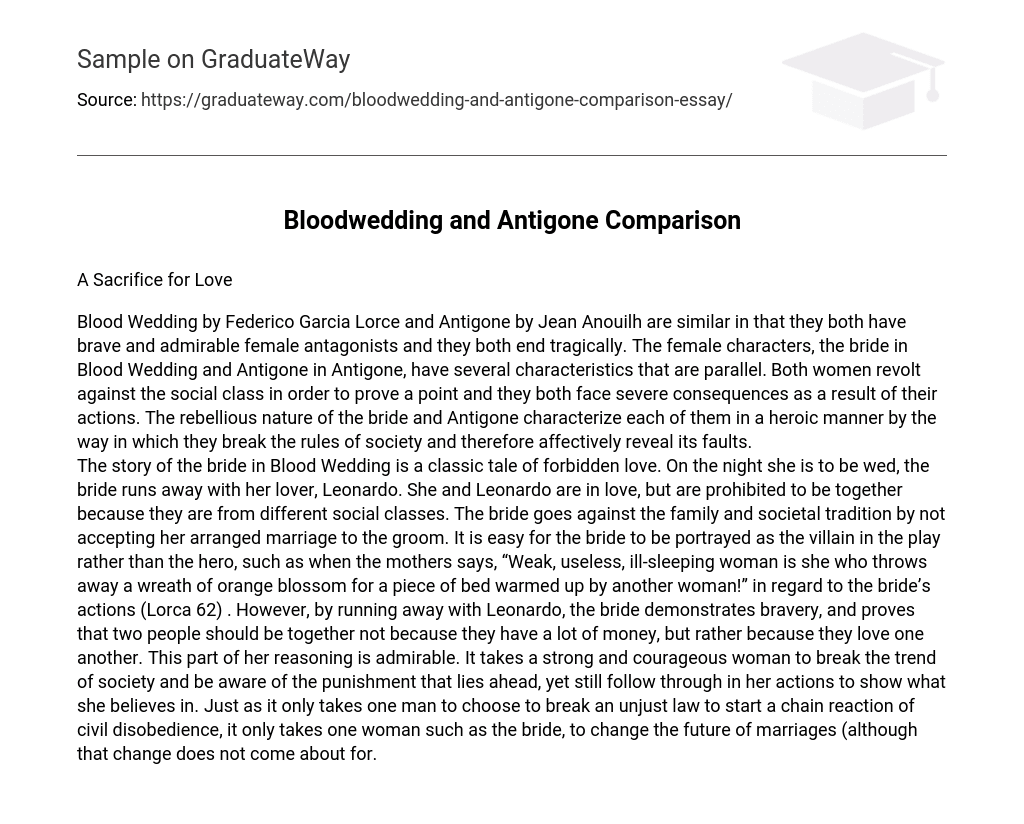A Sacrifice for Love
Blood Wedding by Federico Garcia Lorce and Antigone by Jean Anouilh are similar in that they both have brave and admirable female antagonists and they both end tragically. The female characters, the bride in Blood Wedding and Antigone in Antigone, have several characteristics that are parallel. Both women revolt against the social class in order to prove a point and they both face severe consequences as a result of their actions. The rebellious nature of the bride and Antigone characterize each of them in a heroic manner by the way in which they break the rules of society and therefore affectively reveal its faults.
The story of the bride in Blood Wedding is a classic tale of forbidden love. On the night she is to be wed, the bride runs away with her lover, Leonardo. She and Leonardo are in love, but are prohibited to be together because they are from different social classes. The bride goes against the family and societal tradition by not accepting her arranged marriage to the groom. It is easy for the bride to be portrayed as the villain in the play rather than the hero, such as when the mothers says, “Weak, useless, ill-sleeping woman is she who throws away a wreath of orange blossom for a piece of bed warmed up by another woman!” in regard to the bride’s actions (Lorca 62) . However, by running away with Leonardo, the bride demonstrates bravery, and proves that two people should be together not because they have a lot of money, but rather because they love one another. This part of her reasoning is admirable. It takes a strong and courageous woman to break the trend of society and be aware of the punishment that lies ahead, yet still follow through in her actions to show what she believes in. Just as it only takes one man to choose to break an unjust law to start a chain reaction of civil disobedience, it only takes one woman such as the bride, to change the future of marriages (although that change does not come about for.





